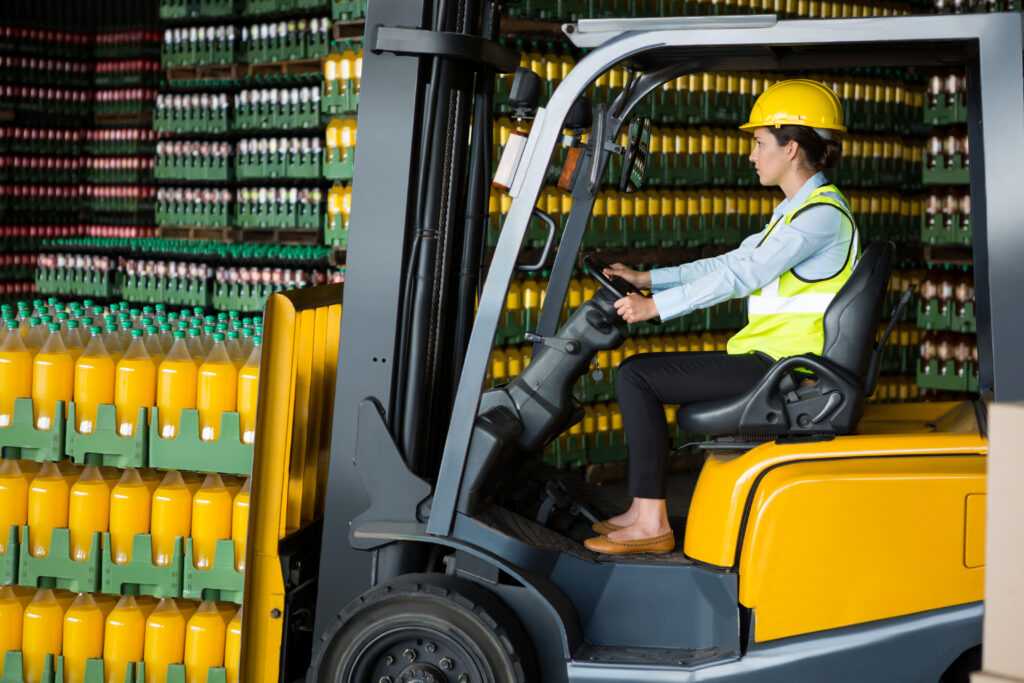Thanks to increasingly global trade and digital transformation, dockyards, fulfilment centres, and warehousing operations have all had to contend with massive increases in demand, driving these workplaces to become more efficient than they’ve ever been. This remarkable transformation would not be possible without modern forklift trucks.
A forklift truck or simply a forklift is a powered industrial vehicle used to lift, move, and stack heavy materials and standardised cargo pallets over short distances. While these machines have been around for decades, modern iterations offer advanced ergonomics as well as better reliability and efficiency than older models, making them much more suited for modern operations where speed and safety are equally emphasised.
With global labour and real estate costs continuing to rise, warehouses are also increasingly turning to forklift trucks to multiply the cargo-moving potential of smaller workforces or more crowded warehouses. Aside from just simply lifting heavy loads, forklifts also enable warehouses to make much better use of what space they have available, driving efficiency and profits in multiple ways.
That said, let’s delve into how these often-overlooked machines make warehouses more efficient than ever.
1. Increased Total Load Handling Capacity
Some materials and machinery are simply too impractical to move with human power alone, even with tools like hand trucks and trolleys. With forklifts, it’s possible for warehouse operations to lift, stack, and transport heavy loads that would otherwise be dangerous or highly inefficient for manual labour. The capabilities provided by these machines not only speed up load management but also reduce the likelihood of accidents and product damage.
2. More Available Storage
Forklift trucks enable warehouses to use more vertical storage space, increasing efficiency and reducing real estate costs. Modern forklifts are also designed to utilise high-rise racking systems effectively to maximise storage while still allowing specific crates and pallets. The quicker access to goods also helps speed up order fulfilment times, enabling the warehouse to achieve better customer satisfaction.
3. Safer and Faster Workflows
Modern forklifts are a good deal more manoeuvrable and responsive compared to older machines, allowing them to seamlessly transport goods wherever they need to go. This improved performance reduces handling times and bottlenecks in the workflow, so that even smaller teams can move more pallets.
In addition, some forklift trucks can be equipped with specialised attachments like clamps, rotators, or side shifters to handle various types of materials more efficiently. This versatility enables warehouses to quickly readapt to different product requirements and handle more types of cargo without the need to invest in multiple pieces of heavy equipment.
4. Reduced Labour and Downtime Costs
Labour cost reduction is where forklifts truly shine, greatly simplifying the moving of heavy objects. This lets one operator do the work of several manual labourers with much more efficiency and with far fewer risks of fatigue and injury. Ultimately, it results in shorter payroll rosters, lower insurance premiums, as well as reduced downtime due to worker injuries.
Modern forklifts take these advantages even further. Compared to older machines, they often take less training to master, greatly reducing training costs and minimising risks to warehouse personnel. They also make heavy use of advances in ergonomics, noise damping, and emissions reduction, further improving safety and minimising downtimes caused by repetitive stress injuries.
5. Systematised Inventory Management
When combined with appropriate racking systems, forklift trucks enable warehouses to implement more timely stock rotation, allowing for stricter adherence to practices such as first-in, first-out (FIFO) or last-in, first-out (LIFO) methods. This also means that warehouses can easily pivot their operations to use whichever inventory management strategy best suits their current goals.
Some advanced forklifts can also integrate with warehouse management systems (WMS), allowing for up-to-the-second tracking of goods in the warehouse. This improved visibility is especially helpful in fast-paced environments, as it reduces the need for manual tagging and processing to track goods within the warehouse.
6. Supports a Wider Range of Operations
Forklifts are now increasingly designed with features like electric or high-efficiency, low-emission powertrains, making them ideal for indoor use. While these newer models help warehouses reduce their carbon footprints and energy costs, another important advantage is their ability to operate in sensitive environments. These models can be used in cold storage facilities, near residential zones, and in other noise- or emission-sensitive settings.
Smarter Forklifts for Safer, Faster, More Profitable Warehousing
Investing in the right forklifts enables businesses to enjoy a wide array of efficiency and cost benefits, particularly when they’re paired with other modern improvements like rack systems and WMS solutions. It’s not just about the bottom line either, as newer forklifts also contribute to much safer warehousing operations.
However, not all forklifts are the same. If you’re looking to drive efficiency in your warehouse operations, first consider where forklift trucks can fit into your current processes. Next, work with your warehouse team and consider which models make the most sense to integrate. If you’re not ready to make a big financial commitment, you can also consider renting an appropriate model rather than buying it outright. Taking these simple steps should allow your warehouse to enjoy the efficiency benefits of updated forklifts without the risk of unnecessary expenses or operational disruptions.

 Rogerry Nelsonier is a trailblazer in the tech industry, renowned for his passion for technology and its potential to drive societal impact. Inspired by the rapid advancements in technology, Rogerry envisioned a collaborative space where innovative minds could converge to explore groundbreaking ideas and develop transformative solutions. This vision culminated in the founding of Info Wave Circle, a dynamic community dedicated to fostering innovation and creativity.
Rogerry's journey began in Pompano Beach, Florida, where he established Info Wave Circle to bring together like-minded individuals passionate about leveraging technology for positive change. Under his leadership, Info Wave Circle has grown into a thriving hub for tech enthusiasts, entrepreneurs, and innovators. Rogerry’s commitment to pushing the boundaries of what technology can achieve continues to inspire those around him, making Info Wave Circle a beacon of progress and societal advancement.
Rogerry Nelsonier is a trailblazer in the tech industry, renowned for his passion for technology and its potential to drive societal impact. Inspired by the rapid advancements in technology, Rogerry envisioned a collaborative space where innovative minds could converge to explore groundbreaking ideas and develop transformative solutions. This vision culminated in the founding of Info Wave Circle, a dynamic community dedicated to fostering innovation and creativity.
Rogerry's journey began in Pompano Beach, Florida, where he established Info Wave Circle to bring together like-minded individuals passionate about leveraging technology for positive change. Under his leadership, Info Wave Circle has grown into a thriving hub for tech enthusiasts, entrepreneurs, and innovators. Rogerry’s commitment to pushing the boundaries of what technology can achieve continues to inspire those around him, making Info Wave Circle a beacon of progress and societal advancement.
